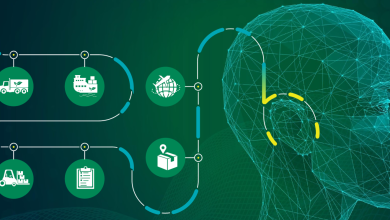
You’ve got a tool for everything: one for purchase orders, another for supplier onboarding, a third for inventory tracking, and maybe a fourth (or fifth) for shipping updates. On paper, it looks like a modern, tech-enabled operation. In reality? It’s a tangled mess that’s quietly costing you time, money, and trust.
You’re not alone. Most businesses stack point solutions in the hope of achieving efficiency—only to end up with data silos, manual workarounds, and frustrated teams. The real problem isn’t the tools themselves.
It’s that they don’t talk to each other. What you actually need isn’t more apps—it’s a unified supply chain automation platform that connects people, processes, and data into one intelligent system. Without it, even the best tools operate in isolation. With it, everything just… works.
The Hidden Costs No One Talks About
Disconnected tools create invisible drains:
- Lost time: Employees spend hours copying data between systems. (The average procurement professional wastes 15–20 hours a week on manual tasks.)
- Errors: Typos, missed updates, duplicate entries—small mistakes that lead to big delays or stockouts.
- Blind spots: No single view of supplier performance, inventory levels, or shipment status.
- Slow decisions: Leadership gets reports days late—based on outdated or partial data.
Worst of all? You pay for all these tools—but get only a fraction of their potential value.
Why “Just Integrate” Isn’t Enough
Many try to fix this with custom integrations or middleware. But those often break with updates, require constant IT support, and still don’t deliver real-time insights. They’re band-aids on a structural flaw: you’re connecting tools, not building a system.
What you really need isn’t more connections—it’s one unified automation platform.
What a True Supply Chain Automation Platform Delivers
A real platform isn’t a collection of apps. It’s a single, intelligent system where data flows freely, processes are automated end-to-end, and AI adds intelligence—not complexity.
Here’s how it solves real problems—whether you’re just starting out or leading a global operation:
1. One Source of Truth
All data—purchase orders, supplier info, inventory, delivery status—lives in one place. No more switching tabs or guessing which spreadsheet is current.
2. End-to-End Process Automation
From requisition to payment, workflows run automatically. Approvals trigger purchase orders. POs update inventory. Shipments update finance. No human intervention needed—unless something’s off.
3. AI That Adds Value, Not Noise
Instead of bombarding you with alerts, the platform uses AI to:
- Predict supplier delays based on historical data
- Flag unusual pricing or duplicate invoices
- Recommend optimal reorder points
4. Built for Real People
A good platform is designed with your team in mind. Simple interfaces, mobile access, and role-based views mean faster adoption—and less resistance.
Real Impact, Fast Results
One mid-sized manufacturer switched from five disconnected tools to a single supply chain automation platform. Within 90 days:
- Procurement cycle time dropped by 45%
- Invoice errors fell by 70%
- Teams reclaimed 12+ hours per week
They didn’t just save money—they freed up their people to focus on strategic work: negotiating better contracts, building supplier relationships, and planning for growth.
Start Simple. Think System.
You don’t need to replace everything overnight. Start with one critical process, such as purchase-to-pay or supplier onboarding, and automate it on a unified platform. Prove the value. Then expand.
The goal isn’t to have the most tools. It’s to eliminate the need for extra ones.
Final Thought
Disconnected tools create the illusion of progress while draining your real resources: time, attention, and trust. A true automation platform cuts through the noise and puts clarity, speed, and control back in your hands.
Because in today’s supply chain, speed isn’t just about delivery—it’s about how fast you can see, decide, and act.





